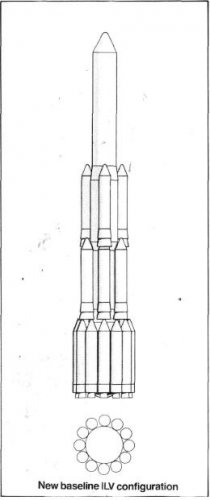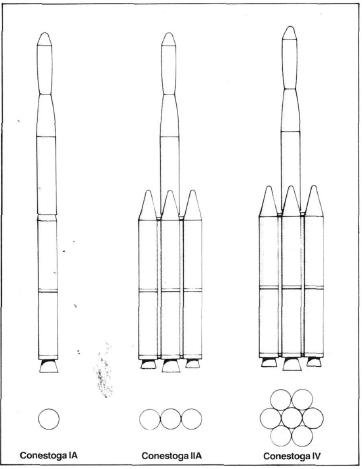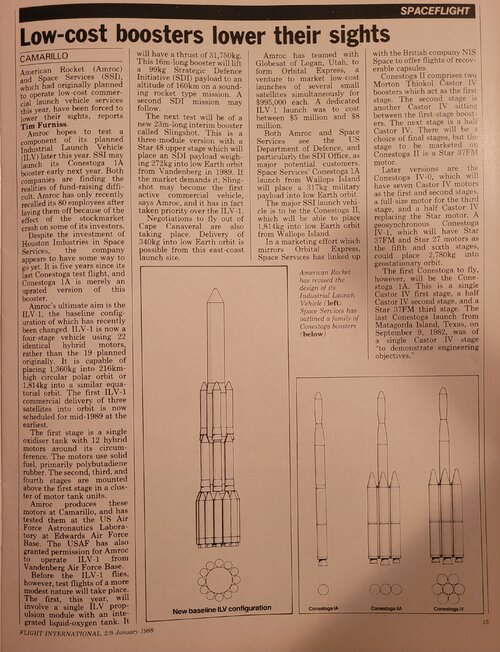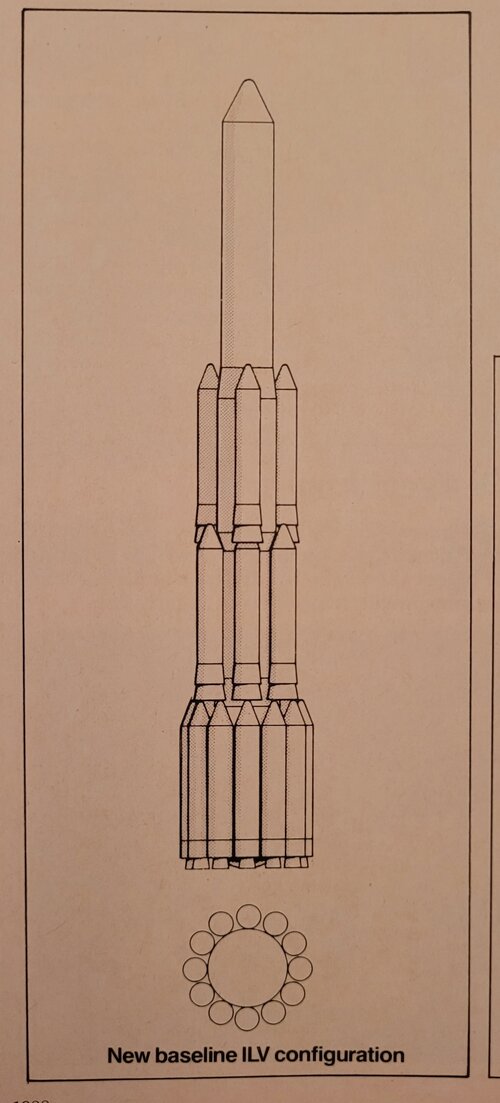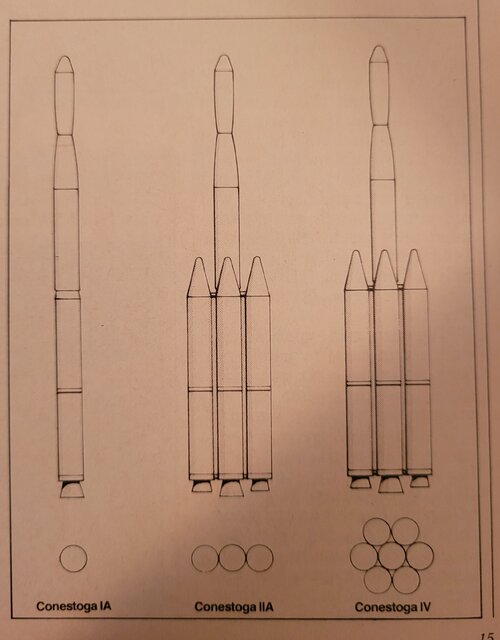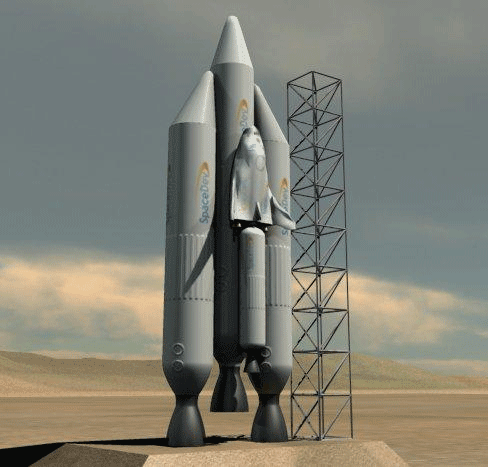Amroc proposed a four stage vehicle propelled by hybrid motors which use a solid fuel and liquid oxygen. In total there were to be 19 motors, 12 of which were clustered around the central tank as the first stage, 4 formed the second stage, 2 the third stage and the final motor the fourth stage. The vehicle was to be 25 m long and be capable of placing a payload of 1360 kg into a polar orbit. The first flight was envisaged for 1988 but the vehicle did not eventuate and Amroc instead concentrated on the manufacturing of rocket components.
SpaceDev Corporation of San Diego acquired exclusive rights to the intellectual property of the former American Rocket Company (Amroc), in particular the designs of the hybrid rocket motor technology. Hybrid rockets combine a liquid fuel oxidizer and solid fuels (hence hybrid) making for an environmentally cleaner motor which is non-explosive and less expensive to manufacture. No plans have been made for the development of a launcher which will utilise the technology.
The Amroc Aquila proposal envisaged a family of three launch vehicles. The Aquila-1 vehicle would be able to place 315 kg into low Earth orbit, a version designated Aquila-21 would have had a capability of 1135 kg, whilst there are also references to an Aquila-421.


